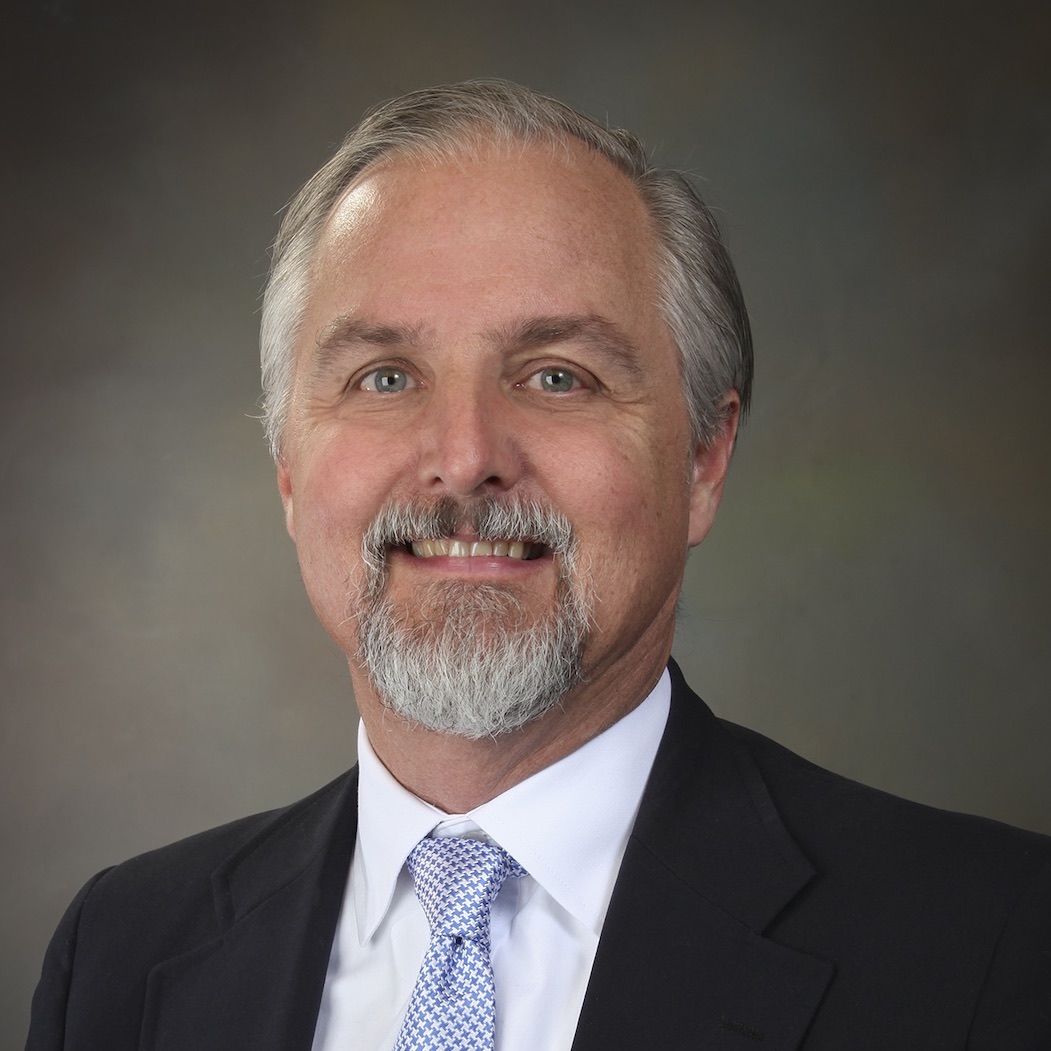Career Profile
Dr. Rick Muller is Director of the Intelligence Advanced Research Projects Activity (IARPA). As IARPA's sixth full-time director, he is responsible for implementing high-risk, high-payoff, technically viable research programs to address the Intelligence Community's most challenging intelligence gaps and provide our nation with an overwhelming intelligence advantage. Prior to joining IARPA, Dr. Muller was senior manager of Quantum and Advanced Microsystems at Sandia National Laboratories and led the Quantum Information Science program there. He also served as the director of Department of Energy's (DOE) Quantum Systems Accelerator, one of the five centers DOE created under the National Quantum Initiative. From 2016 to 2017, Dr. Muller led the drive for advanced computational capabilities for national security as part of the Joint Program Office for the National Strategic Computing Initiative. Before taking on management roles, his research interests focused on developing computational methods to predict the behavior and applications of novel materials, molecules, and devices. Dr. Muller holds a bachelor's degree from Rice University and a doctorate from the California Institute of Technology in chemistry.
Experience
The Intelligence Advanced Research Projects Activity invests in high-risk, high-payoff research programs to tackle some of the most difficult challenges of the agencies and disciplines in the Intelligence Community (IC). IARPA’s mission is to push the boundaries of science to develop solutions that empower the IC to do its work better and more efficiently for national security. IARPA does not have an operational mission and does not deploy technologies directly to the field. Instead, we facilitate the transition of research results to our IC customers for operational application.
The Quantum Systems Accelerator is one of five DOE National Quantum Initiative Science Research Centers that aims to catalyze national leadership in quantum information science to co-design the algorithms, quantum devices, and engineering solutions needed to deliver certified quantum advantage in Department of Energy scientific applications. The center is led by Lawrence Berkeley National Laboratory, with Sandia National Laboratories serving as the lead partner.
The Quantum and Advanced Microsystem group at Sandia is involved in developing key techologies for quantum computing, quantum sensing, neuromorphic computing, and other novel computing technologies.
Coordinated Sandia's Quantum Information Sciences teams to advance quantum science.
The Computational Materials and Data Sciences at Sandia develops quantum materials science, density functional theory, reactive force fields, and molecular dynamics techniques for application to problems of national impact.
The Joint Program Office coordinates across the USG work on the NSCI with DOD, DOE, NSF, OSTP, OMB, NIST, IARPA. As part of this work, I led workshops exploring impact of foreign HPC on national and economic security, and initiated programs developing novel hardware and software paradigms for heterogeneous computing.
Deputy director of Sandia Science and Engineering of Quantum Information Sciences Research Challenge. Deputy Project Lead and Modeling Lead, Quantum Information Science and Technology, developing Silicon donor and dot qubits. PI for development of QCAD simulation tool for nano- and quantum electronic devices. Sandia representative for quantum computing road mapping with DOE/ASCR, DOE/ASC and DOE/Materials. Modeling Team Lead, QIST GC-LDRD project developing semiconductor qubits.
Selcted Publications
- Impact of Incorporation Kinetics on Device Fabrication with Atomic Precision. Jeffrey A. Ivie, Quinn Campbell, Justin C. Koepke, Mitchell I. Brickson, Peter A. Schultz, Richard P. Muller, Andrew M. Mounce, Daniel R. Ward, Malcolm S. Carroll, Ezra Bussmann, Andrew D. Baczewski, and Shashank Misra. Phys. Rev. Applied, 16, 054037, 2021. arXiv 2105.12074.
- Advanced Electronic Structure Calculations for Nanoelectronics. John K. Gamble, Erik Nielsen, Andrew Baczewski, Jonathan E. Moussa, Xujiao Gao, Andrew G. Salinger, and Richard P. Muller. Computational Materials, Chemistry, and Biochemistry: From Bold Initiatives to the Last Mile (2021).
- Sympy: Symbolic computing in Python. Aaron Meurer, Christopher P Smith, Mateusz Paprocki, Ondrej Certik, Matthew Rocklin, Amit Kumar, Sergiu Ivanov, Jason K Moore, Sartaj Singh, Thilina Rathnayake, Sean Vig, Brian E Granger, Richard P Muller, Francesco Bonazzi, Harsh Gupta, Shivam Vats, Fredrik Johansson, Fabian Pedregosa, Matthew J Curry, Ashutosh Saboo, Isuru Fernando, Sumith, Robert Cimrman, Anthony Scopatz. PeerJ Comput. Sci. 3, e103 (2017).
- The Promise of Quantum Simulation. Richard P. Muller and Robin Blume-Kohout. ACS Nano 9, 7738 (2015). arXiv 1507.06035.
- Report: ASCR Report on Quantum Computing for Science. Alan Aspuru-Guzik, Wim van Dam, Edward Farhi, Frank Gaitan, Travis Humble, Stephen Jordan, Andrew Landahl, Peter Love, Robert Lucas, John Preskill, Richard Muller, Krysta Svore, Nathan Wiebe, Carl Williams.
- Materials Frontiers to Empower Quantum Computing: A Report on Materials Opportunities for Quantum Computing. Christopher Richardson, John Sarrao, Antoinette Taylor, Nathan Baker, Vincent Ballarotto, Matthew Blain, Jay Dawson, David Dean, Jonathon Dubois, Vincenzo Lordi, Richard Muller, Kelly Perry, Marvin Warner. Report on DOE Workshop, Los Alamos, 2015.
- Multi-qubit gates protected by adiabaticity and dynamical decoupling applicable to donor qubits in silicon. Wayne M. Witzel, Ines Montano, Richard P. Muller, and Malcolm S. Carroll. Physical Review B 92, 081407(R) (2015). arXiv 1410.2245.
- Efficient self-consistent quantum transport simulator for quantum devices. X. Gao, D. Mamaluy, E. Nielsen, R. W. Young, A. Shirkhorshidian, M. P. Lilly, N. C. Bishop, M. S. Carroll, and R. P. Muller. Journal of Applied Physics 115, 133707 (2014). arXiv 1403.7564.
- Charge-sensed Pauli blockade in a MOS lateral double quantum dot. Khoi. T. Nguyen, Michael. P. Lilly, Erik Nielsen, Nathan Bishop, Rajib Rahman, Ralph Young, Joel Wendt, Jason Dominguez, Tammy Pluym, Jeffery Stevens, Tzu-Ming Lu, Richard Muller, Malcolm. S. Carroll. Nano Letters, 13, 5785, 2013.
